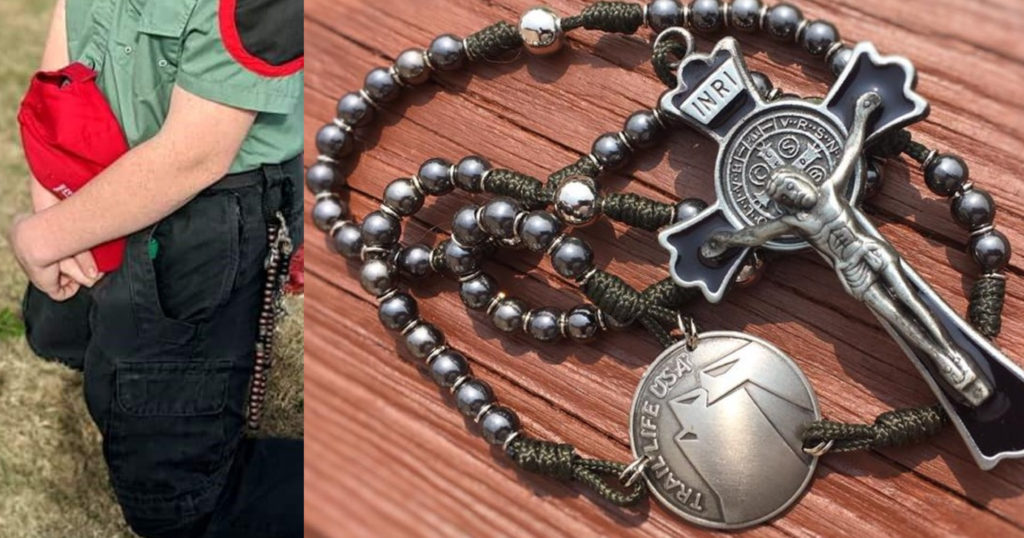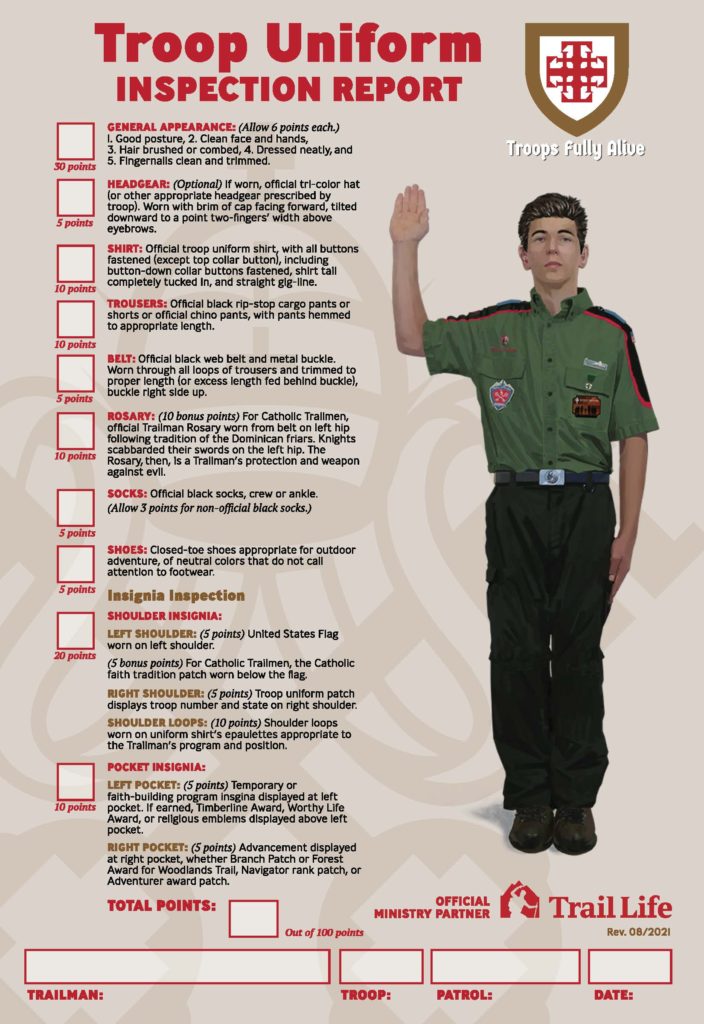The official blog of Troops Fully Alive. Share your troop’s ideas.
Send contributions to sourcesummit@troopsfullyalive.com.
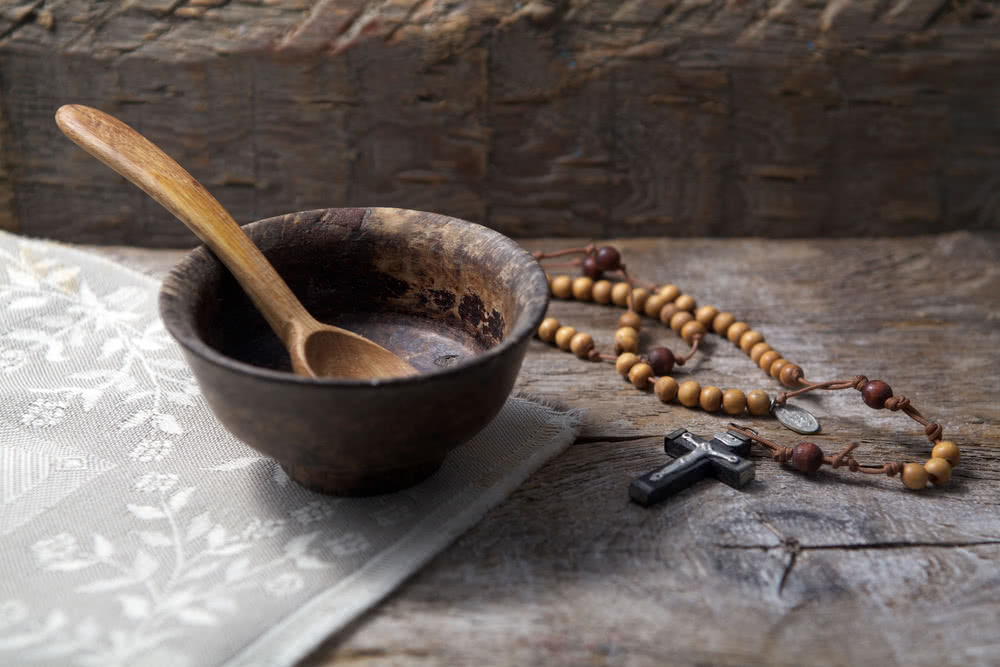
Disciplines
In his essay On Liberty (1859), English philosopher John Stuart Mill wrote that “liberty consists in doing what one desires.” More than a century later in Planned Parenthood v. Casey, the U.S. Supreme Court found that “At the heart of liberty is the right to define one’s own concept of existence, of meaning, of the universe, and of the mystery of human life.” 505 U.S. 833, 851 (1992). From the Enlightenment straight through present day, freedom is increasingly described in terms of an individual’s unfettered authority to do whatever he wants and define his own identity.
This view stands in contrast with Church teaching on true freedom. “Human freedom…attains its perfection when directed toward God” (CCC 1731). “The more one does what is good, the freer one becomes. There is no true freedom except in the service of what is good and just. The choice to disobey and do evil is an abuse of freedom and leads to ‘the slavery of sin’” (CCC 1733). Thus, true freedom does not mean doing whatever one wants but conforming one’s will to the Divine Will.
In his Confessions, Saint Augustine of Hippo explains that because God created us for himself, “our hearts are restless, until they can find rest in [him.]” We each have an infinite longing for the Divine—for the true, good, and beautiful—for God himself. Today’s materialistic culture spreads the lie that happiness is achieved through accumulating wealth, material things, sensual pleasure, power, or honor. But these are finite things that can never satisfy our infinite desire for God.
To avoid being overtaken by our desires, the Church has prescribed certain disciplines, such as fasting and abstinence, to practice detachment from material and sensual pleasures, helping to reorder our lives to God. Discipline is defined as “control gained by enforcing obedience or order, self-control.” The word discipline is derived from its Latin root discipulus, meaning pupil, which shares the same root as disciple, a follower of Jesus Christ. Thus, part of being a disciple is learning self-mastery, which, with God’s grace, frees us from slavery to sin.
Since 1983, canon law has required fasting only on Ash Wednesday, Good Friday, and, to the extent possible, on Holy Saturday. Although abstinence from meat is also prescribed for all Fridays of the year, except when a solemnity falls on a Friday, since 1983, the U.S. bishops’ conference has allowed substitution of pious or charitable acts for abstinence from meat on Fridays except Good Friday, and abstinence from eating meat on Lenten Fridays is typically retained.
By contrast, in the early 20th century, canon law required fasting throughout Lent, eating only one meal per day, with fasting and abstinence on Fridays. In the early Church, on fasting days, the faithful did not eat their one meal until the evening after sunset, and abstinence precluded eating meat, milk, butter, cheese, eggs, wine, and oil. By the 10th century, the one meal was allowed at 3 p.m., and by the 14th century, the one meal on fasting days could be taken after noon.
In sum, throughout the centuries, the Church’s disciplines for fasting and abstinence have become more and more relaxed, as the predominant culture has become increasingly materialistic, hedonistic, and self-indulgent. Another way for Catholic troops to build an authentic Catholic identity is to better observe aspects of the Church’s traditional disciplines. For example, when camping as a troop, on Friday evening, consider refraining from serving foods from which the faithful would traditionally abstain. During Lent, consider serving lighter meals reflecting the penitential character of the season.
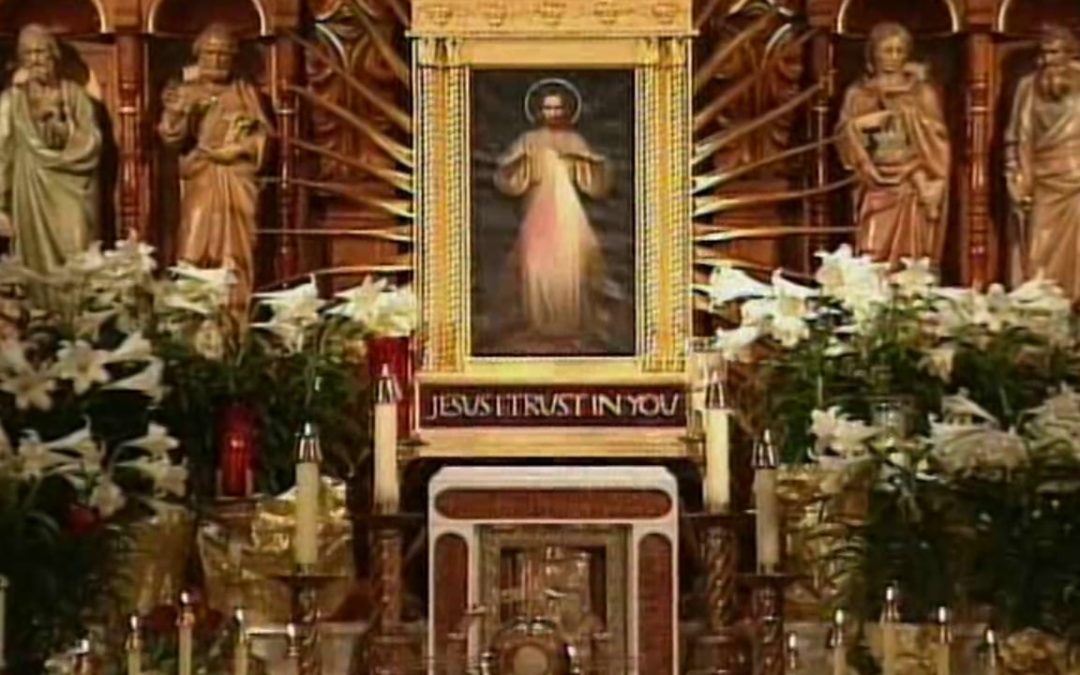
Divine Mercy Chaplet
The past four summers, my family has attended a Holy Family Fest at Catholic Familyland, a one-week retreat for the whole family hosted by the Apostolate for Family Consecration just outside of Steubenville, Ohio. Among many experiences I treasure about these summer retreats, one that I really like is that each day—at three o’clock sharp (Hour of Mercy), everyone at camp stops whatever they are doing at that moment. Over a camp-wide speaker system, one of the youth volunteers leads all in corporate prayer of the Divine Mercy Chaplet.
This is a simple, yet powerful tradition that every Catholic troop can add to help build an authentic Catholic identity. Whether engaged in hiking, camping, or any other outdoor adventure, no matter what the troop is doing, the discipline of stopping and praying the Divine Mercy Chaplet is a profound way to refocus the troop on Trail Life’s Christ-centered program.
For the sake of His sorrowful Passion, have mercy on us and the whole world!
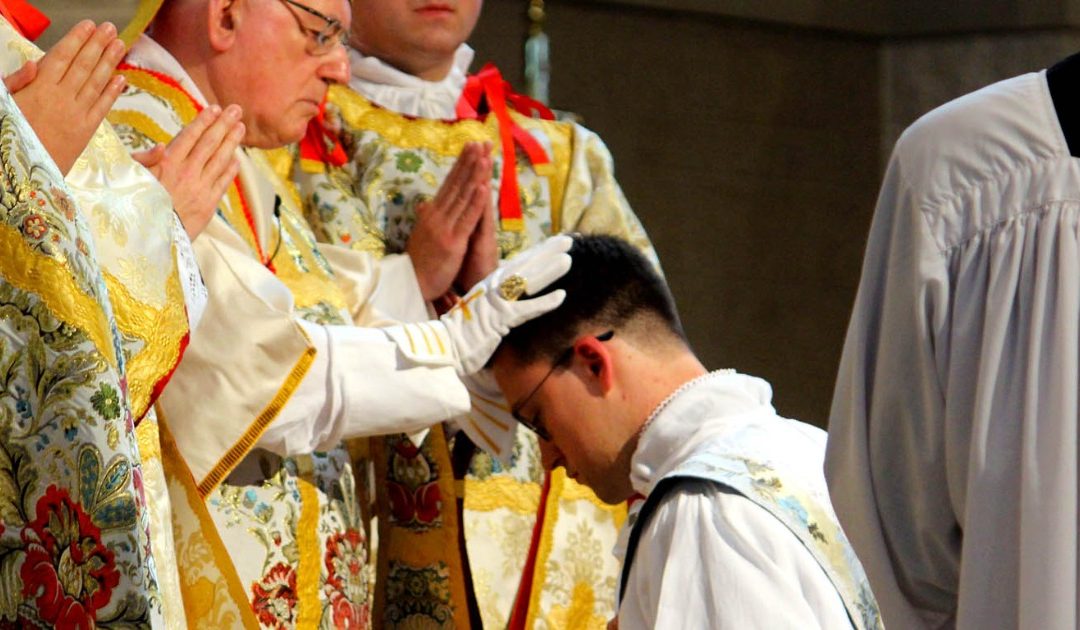
Priestly Ordination
There are few liturgical celebrations more compelling than priestly ordination, and there is no better way to visually demonstrate the viability of the priesthood as a vocation for our youth. Another strong way for Catholic troops to build an authentic Catholic identity is to attend each ordination rite as a troop.
An ordination Mass is typically set in the bishop’s cathedral parish. To be sure, in some dioceses, a Trail Life troop may be several hours’ driving from the cathedral; however, the impact of the troop’s attending each ordination is definitely worthwhile. The Trailmen will experience the splendor of the ordinands’ laying prostrate, the bishop’s laying hands upon those being ordained, the anointing of the priests’ hands, and the brotherhood exhibited as the priests of the diocese embrace their new brothers in the sign of peace.
In addition, both the bishop and his brother priests will observe Trailmen in formal troop uniform, sharing with them this important event in the life of the Church, invaluable for promotion of Trail Life among the clergy. Of course, attending diaconate ordinations is also greatly encouraged.
In the image below, the Trailmen pictured are among those receiving the first blessings conferred by a newly ordained priest.
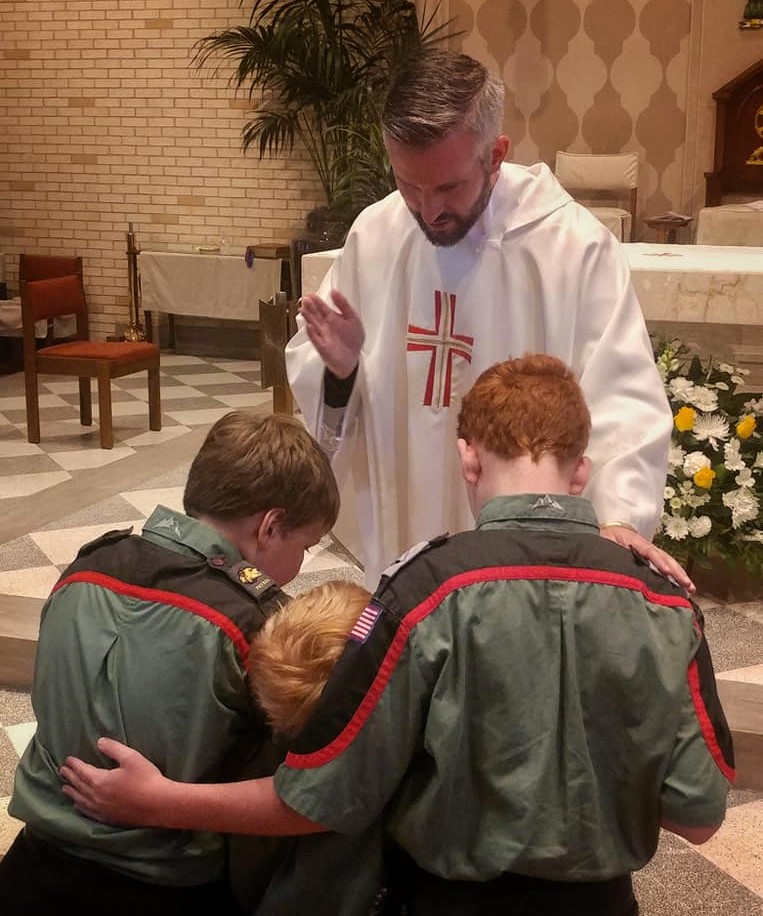
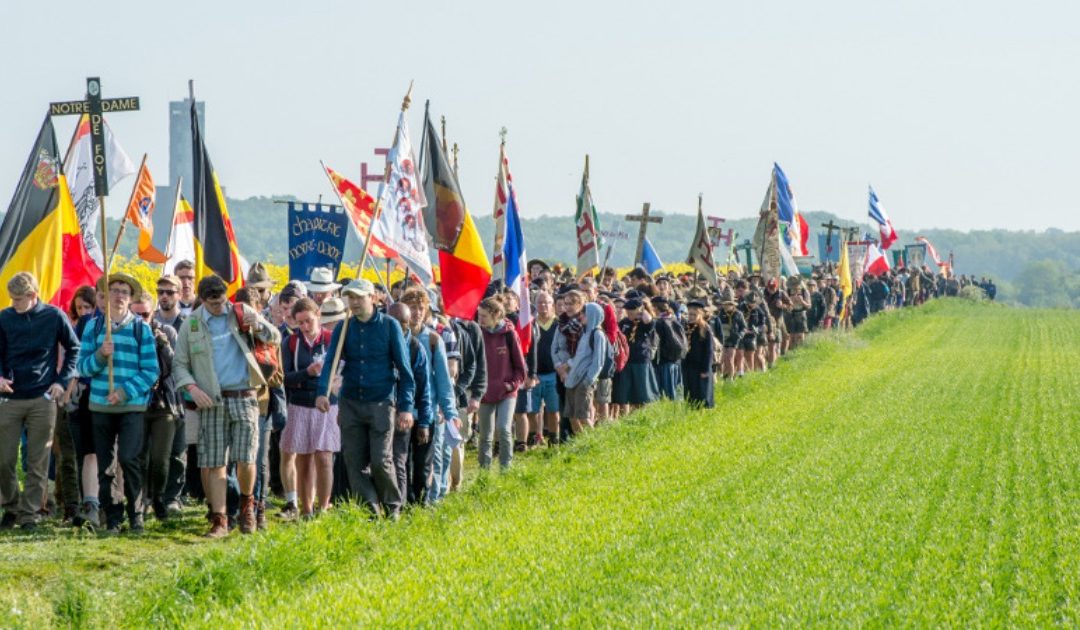
Pilgrimage
Camping and hiking are essential frameworks for Trail Life’s mission to guide generations of courageous young men to honor God, lead with integrity, serve others, and experience outdoor adventure. It is in the outdoors, gathered around the campfire or gazing at the night’s sky, that boys find connection not only with each other but spiritually with God through his creation. In our Catholic troops, pilgrimage is a unique way to express the Catholic faith through outdoor adventure.
What is pilgrimage? In short, a pilgrimage is a journey made to a holy place. For hundreds of years before Christ, Jewish men traveled several times a year on certain feast days to the temple in Jerusalem. Since the early Christian church, the faithful have made pilgrimages to various sacred sites, including the Holy Land and Rome. Over the centuries, various pilgrim routes have become enshrined as traditional, such as the Camino de Santiago (“Way of Saint James”) with its path from southern France to the Cathedral of Santiago de Compostela near the Spanish coast. In a November 2010 address while visiting the cathedral, Pope Benedict XVI shared the following thoughts about pilgrimage:
To go on pilgrimage is not simply to visit a place to admire its treasures of nature, art or history. To go on pilgrimage really means to step out of ourselves in order to encounter God where he has revealed himself, where his grace has shone with particular splendor and produced rich fruits of conversion and holiness among those who believe. Above all, Christians go on pilgrimage to the Holy Land, to the places associated with the Lord’s passion, death and resurrection. They go to Rome, the city of the martyrdom of Peter and Paul, and also to Compostela, which, associated with the memory of Saint James, has welcomed pilgrims from throughout the world who desire to strengthen their spirit with the Apostle’s witness of faith and love.
Customarily undertaken on foot, a pilgrimage is more than a hiking trip. It is a spiritual journey for the purpose of honoring God. Pilgrimages typically call upon the faithful to follow in Christ’s footsteps, especially the way of the cross. Pilgrimages are often difficult expeditions. For many pilgrims, the journey’s great challenges evoke a penitential character, which help them deepen the experience through prayer and mortification. To the extent possible, along the route, pilgrims seek out the sacraments, including penance and reconciliation and Holy Mass.
Another way that our Trail Life troops may contribute to an authentic Catholic identity is for the troop or a patrol to periodically embark on a pilgrimage. Although many of the most holy places are found in Europe or the Middle East, there are many sacred sites in the United States, including shrines, basilicas, and monasteries, to which our Trailmen may hit the trail. Walk Worthy!
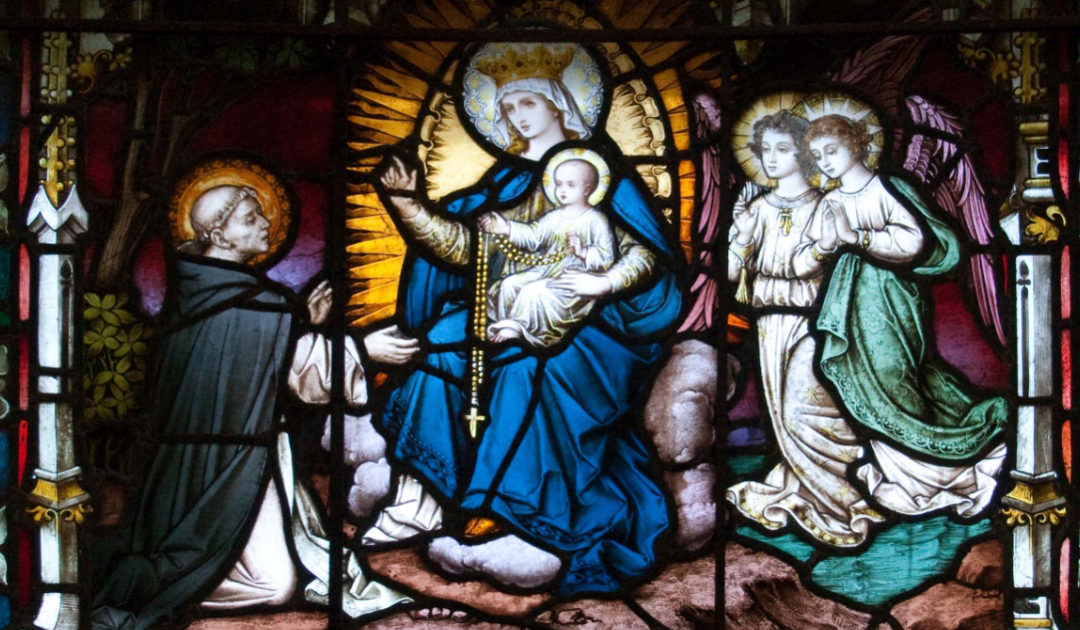
The Rosary
According to tradition, the rosary was presented through an apparition of Our Lady to Saint Dominic following three days of his prayer and fasting, seeking guidance to confront rampant heresy he encountered while travelling in southern France. The Virgin Mary told Dominic to pray the Marian Psalter comprising 150 Hail Mary prayers divided into groups of ten by Our Father prayers. Prayer beads were used to keep track of the prayers. Mary revealed to Dominic those mysteries he should preach, corresponding to the Psalter prayers, which told stories from Christ’s life that contradicted the heresy. Dominic proved to be more successful in his preaching and conversions than other clergy.
Today, the Dominican friars continue to wear the rosary as part of their habit. Knights traditionally scabbarded their swords on the left hip, and, similar to knights, the friars wear the rosary on the left hip symbolizing the rosary is one’s protection and weapon against evil. Another way to help build Catholic identity in our troops is for Trailmen to wear the rosary, like the Dominicans, on the left hip. Troops or patrols are encouraged to pray the rosary daily at Trail Life events. In addition, commemorating the Hour of Mercy, which according to Saint Faustina Kowalska’s diary is the time of the death of Jesus, the troop or patrol can pause at three o’clock in the afternoon to pray the Divine Mercy Chaplet.
The image below shows a kneeling Trailman wearing the rosary on his left hip. Also shown is a custom rosary designed with a Trail Life medal. To help Catholic troops promote the rosary as a regular part of the formal Trail Life uniform, below is a link to a uniform inspection sheet with bonus points for wearing the rosary while in uniform.
